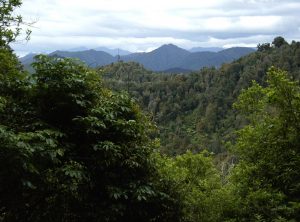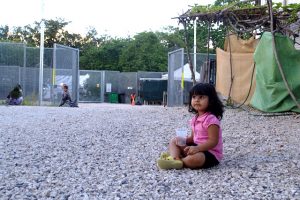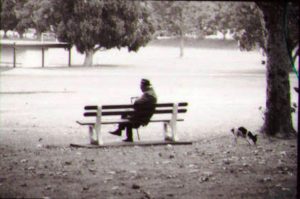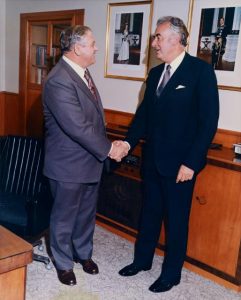Walking the covid election tightrope: Marc Hatot, www.pixabay.com
Election days in New Zealand and the Australian Capital Territory (ACT) were carried out last weekend in the Pacific region’s usual civilised fashion. Voters had to run the gauntlet of volunteers handing out how to vote cards, but safe to say no-one carried assault rifles or acted in a menacing way.
Both elections resulted in clear Labor victories, which ought to be a portent for Australia’s Government. Not that Scott Morrison’s Liberal Coalition will be panicking, as the next Federal election will not be held until 2022 – barring ‘incidents and accidents’ as Paul Simon observed in Call Me Al.
Speaking of, did you know that impossible bass riff in the aforesaid song was achieved by playing a conventional bass run backwards? A digression, sure, but pretty important news for bass players, yes?
As I was saying, the next Australian Federal election is at least 18 months away and probably more. That is one of the problems of four-year terms. If you inherit poor, indecisive leadership (Aus), or worse, leadership that seems quite nutty and dangerous (the US), you will have to live with it for what amounts to 17.5% of your conventional life span.
We may not be able to vote in the US election, but many of us are making our feelings known via social media – in short, we’re worried about the future of the world.
We are worried what the higher echelons of the Republican Party might do if Trump loses, calls foul and refuses to leave the White House.
Despite being deemed ‘vigilante groups with no standing in law’, self-styled militia groups have warned they will turn up at polling booths on November 3. I tried to imagine what would happen if two or three armed people wearing para-military gear turned up at a polling booth in, say, Sunnybank (a Brisbane suburb). Safe to say someone would call triple-zero and armed police would arrive in numbers, arresting said people on suspicion. The charge would most like be ‘going armed in public so to cause fear’.
There’s no doubt this will be the most watched election in history, so in view of the complexity of the US system, here’s an interactive guide produced by the BBC.
Next weekend, Queenslanders will go to the polls, to decide whether to support the Labor Government for another four years, or choose the Liberal National Coalition. We are sending in a postal vote as we will be away from home on the day. Incumbent leader, Premier Annastacia Palaszczuk of the Labor Party, has some hurdles to overcome. Three good ministers have, for one reason or another, decided to resign. Then there are those who opposed the government’s decision to allow the Adani coal mine to go ahead. Opposition leader Deb Frecklington has promised a massive four-lane upgrade of the State’s major highway from Cairns to Gympie (1,513 kms). Colourful independent politician Clive Palmer, who may or may not help the Coalition get elected, mounted an attack campaign just two weeks out, claiming that Labor was planning a ‘death tax’. Labor refuted the claim, made in TV ads and social media posts by Palmer’s United Australia Party.
It might be an over-simplification, but I see 2020 elections being decided almost solely on how well or poorly the incumbent political party managed COVID-19. There can be no doubt that Premiers, Presidents and Prime Ministers are being marked on their response to COVID-19. We could (and should) speculate about what percentage of the close relatives of America’s 216,000 COVID-19 victims, for example, would vote for Donald Trump. Not to mention the close relatives of the 7.89 million Americans who caught the virus.
In New Zealand, PM Jacinda Ardern took a hard line and went straight to a strict lock-down that lasted months. By doing so, the country limited the incidence of the virus to 1,883 cases and 25 deaths.
The ACT also continued to hold the line. On October 16 it said there were no new cases of COVID-19 in the Territory. Official figures show that of the 113 cases since the pandemic began in March, 110 have recovered. There are no COVID-19 patients in Canberra hospitals. The ACT has recorded three deaths.
What is astonishing is that the Territory has tested what amounts to 24% of its 2020 population of 418,800. The number of negative tests recorded in the ACT is now 100,630.
And, despite motions of no confidence and a seemingly relentless campaign of disparagement and criticism of Victorian Premier Dan Andrews, that election too is not until November 26, 2022. Andrews has most recently taken to comparing COVID-19 case results in Victoria with the UK, in March and now. The contrast implies that Victoria dodged a bullet, with additional daily cases mainly reduced to single figures.
By contrast, a Pew Centre research report in August found that 39% of Americans know someone who had been hospitalized or died of the virus.
No-one can under-estimate the scale of work involved in testing people in the US (population 331 million). The Centre for Disease Control (CDC) reported that since March 1, 61.12 million specimens have been tested for SARS-CoV-2 by public health laboratories and clinical and commercial laboratories in the US. As of October 16, the weekly result was: 2.61 million specimens tested for diagnostic purposes and 141,317 (5.4%) were positive. In short, 18.5% of the population has been tested.
Compare this data with Queensland’s Covid results (1,184 cases and 6 deaths since March). Sure, it makes the mitigation measures look like over-kill, but look where we are today – 4 cases between October 4 and 19.
As for next week’s Queensland election, Premier Palaszczuk has refused to be swayed to open the border between Queensland and New South Wales prematurely. It’s been an unpopular decision in some quarters and will cost her votes. But the statistics support the border closure (on March 17): 1.19 million tests have been carried out in Queensland since January 2020, with 0.1% returning a positive result.
That’s equivalent to 36% of Queensland’s population being tested. This figure may be unreliable insofar as some of the tests may have been done on people from outside the state. But even so.
So be thankful we do not live in the US or the UK, where the virus has run amok, as it apparently does in densely populated countries. In an understatement, Prime Minister Boris Johnson recently conceded the UK’s Covid figures are worse than when the country went into lockdown in March. The cumulative tally is 789,000 cases and 44,198 deaths. But the second wave (or is it a third?), took daily new cases from 7,143 on September 29 to 26,687 on October 21. Ironically, given criticism of Johnson’s handling of the crisis, he will not have to face an election until May 3, 2024.
As Paul Simon (or is it Chevy Chase?) sings in this video: “I don’t find this stuff amusing anymore.”
Call me Al: https://youtu.be/uq-gYOrU8bA
FOMM back pages






